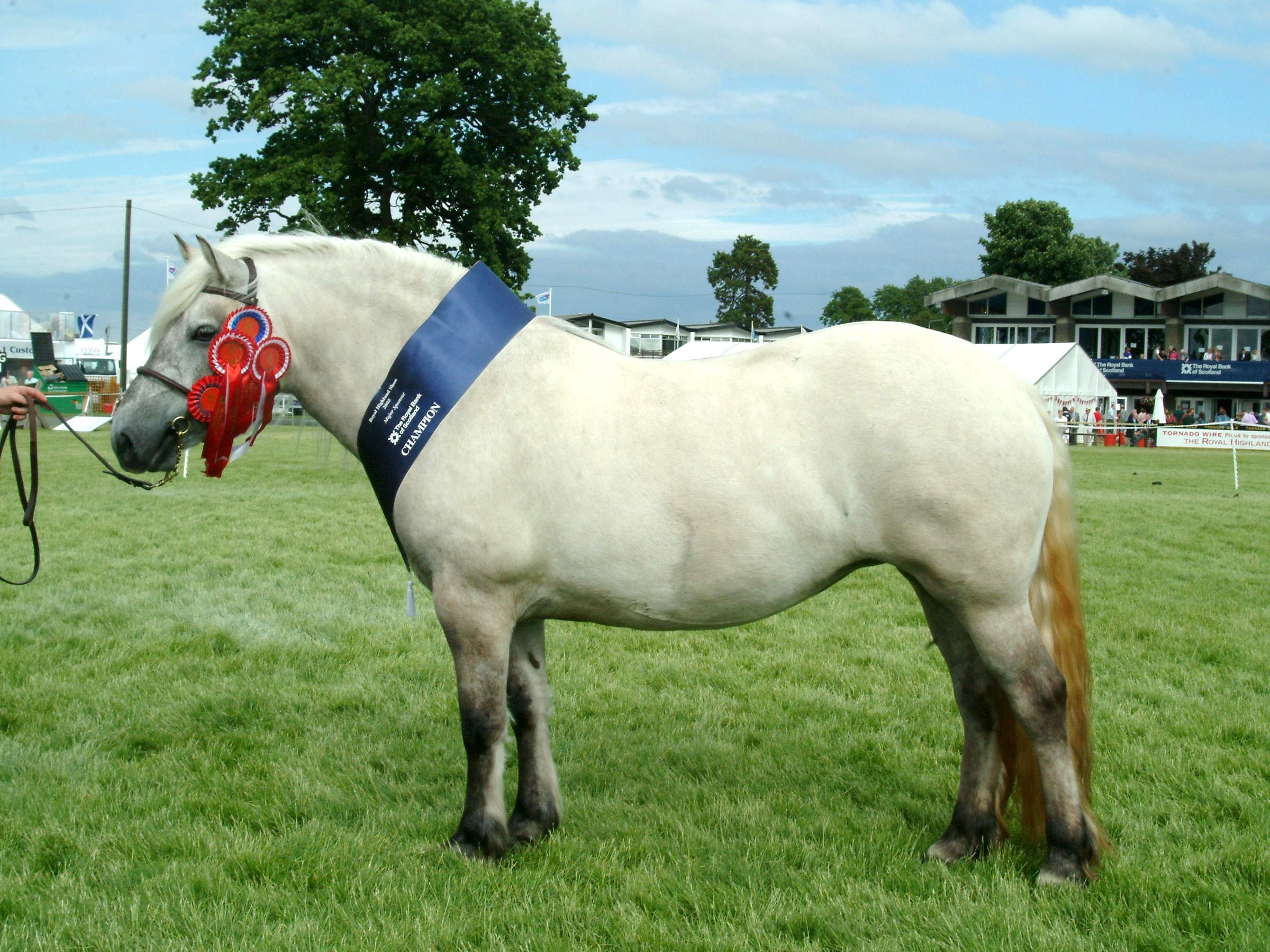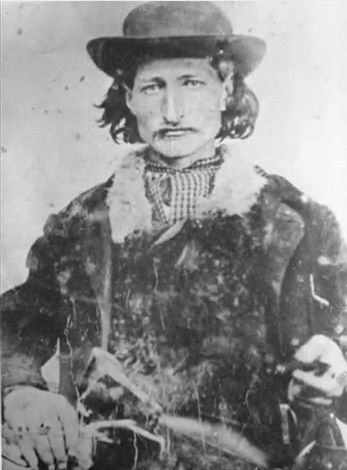|
Rock Creek Station
Rock Creek Station was a stagecoach and Pony Express station in southeastern Nebraska, three miles northeast of the present-day village of Endicott. The site is preserved as Rock Creek Station State Historical Park. History Rock Creek Station was established in 1857 by S.C. Glenn along the Oregon Trail and California Trail, along the west bank of Rock Creek. The station was a supply center and campground for emigrants. In March 1859, the property was purchased by David McCanles and his brother, James, who added a toll bridge across Rock Creek, charging each wagon from 10¢ to 50¢ to cross the bridge depending upon their ability to pay. In 1860, McCanles built a cabin and dug a well on the east side of Rock Creek which became known as the East Ranch. In early 1861, McCanles sold the East Ranch to the Russell, Waddell, and Majors firm, which owned and operated the Pony Express, for a cash deposit with the remainder to be paid in installments. The West Ranch continued to b ... [...More Info...] [...Related Items...] OR: [Wikipedia] [Google] [Baidu] |
Jefferson County, Nebraska
Jefferson County is a county in the U.S. state of Nebraska. As of the 2020 United States census, the population was 7,240. Its county seat is Fairbury. The county was named for Thomas Jefferson, third President of the United States of America. In the Nebraska license plate system, Jefferson County is represented by the prefix 33 (it had the thirty-third-largest number of vehicles registered in the county when the license plate system was established in 1922). History Jefferson County was founded on January 26, 1856, and its governing structure was organized in 1864. It was named for Thomas Jefferson, third president of the United States. In 2010, the Keystone-Cushing Pipeline (Phase II) was constructed south out of Jefferson County. Geography Jefferson County lies on the south line of Nebraska. Its south boundary line abuts the north boundary line of the state of Kansas. The terrain of Jefferson County consists of low rolling hills, whose leveled tops are largely used for a ... [...More Info...] [...Related Items...] OR: [Wikipedia] [Google] [Baidu] |
Alexander Majors
Alexander Majors (October 4, 1814 – January 13, 1900) was an American businessman, who along with William Hepburn Russell and William B. Waddell founded the Pony Express, based in St. Joseph, Missouri. This was one of the westernmost points east of the Missouri River from its upper portion beyond that state. It was a major supply point for migrants and pioneers headed west to Oregon Country. Even though they succeeded in making the deliveries, they did not get the contract. They went bankrupt after the Transcontinental Telegraph opened in October 1861, as its competition eliminated the need for some mail service. Majors supplied rail ties for the crews of the Union Pacific Railroad working on the First transcontinental railroad. After the railroad was completed, he continued to haul freight to towns not yet served by the railroad. Early life Alexander Majors was born October 4, 1814, in Franklin, Kentucky. In 1820, his family moved to the Missouri Territory, settling in the ... [...More Info...] [...Related Items...] OR: [Wikipedia] [Google] [Baidu] |
Protected Areas Established In 1980
Protection is any measure taken to guard something against damage caused by outside forces. Protection can be provided to physical objects, including organisms, to systems, and to intangible things like civil and political rights. Although the mechanisms for providing protection vary widely, the basic meaning of the term remains the same. This is illustrated by an explanation found in a manual on electrical wiring: Some kind of protection is a characteristic of all life, as living things have evolved at least some protective mechanisms to counter damaging environmental phenomena, such as ultraviolet light. Biological membranes such as bark on trees and skin on animals offer protection from various threats, with skin playing a key role in protecting organisms against pathogens and excessive water loss. Additional structures like scales and hair offer further protection from the elements and from predators, with some animals having features such as spines or camouflage servi ... [...More Info...] [...Related Items...] OR: [Wikipedia] [Google] [Baidu] |
Stagecoach Stations In Nebraska
A stagecoach (also: stage coach, stage, road coach, ) is a four-wheeled public transport coach (carriage), coach used to carry paying passengers and light packages on journeys long enough to need a change of horses. It is strongly sprung and generally drawn by four-in-hand (carriage), four horses although some versions are drawn by six horses. Commonly used before History of rail transport, steam-powered rail transport was available, a stagecoach made long scheduled trips using Stage station, stage stations or posts where the stagecoach's horses would be replaced by fresh horses. The business of running stagecoaches or the act of journeying in them was known as staging. Some familiar images of the stagecoach are that of a mail coach, Royal Mail coach passing through a Turnpike trust, turnpike gate, a Dickensian passenger coach covered in snow pulling up at a coaching inn, a highwayman demanding a coach to "stand and deliver" and a Wells Fargo stagecoach arriving at or leaving an ... [...More Info...] [...Related Items...] OR: [Wikipedia] [Google] [Baidu] |
Pony Express Stations
A pony is a type of small horse, usually measured under a specified height at maturity. Ponies often have thicker coats, manes and tails, compared to larger horses, and proportionally shorter legs, wider barrels, heavier , thicker necks and shorter heads. In modern use, breed registries and horse shows may define a pony as measuring at the withers below a certain height; height limits varying from about to . Some distinguish between horse or pony based on its breed or phenotype, regardless of its height. The word ''pony'' derives from the old French ''poulenet'', a diminutive of meaning foal, a young, immature horse. A full-sized horse may sometimes be called a pony as a term of endearment. Definition For many forms of competition, the official definition of a pony is a horse that measures up to at the withers. Standard horses are taller than 14.2. The International Federation for Equestrian Sports defines the official cutoff point at without shoes and with shoes. Howeve ... [...More Info...] [...Related Items...] OR: [Wikipedia] [Google] [Baidu] |
Museums In Jefferson County, Nebraska
A museum is an institution dedicated to displaying or preserving culturally or scientifically significant objects. Many museums have exhibitions of these objects on public display, and some have private collections that are used by researchers and specialists. Museums host a much wider range of objects than a library, and they usually focus on a specific theme, such as the arts, science, natural history or local history. Public museums that host exhibitions and interactive demonstrations are often tourist attractions, and many draw large numbers of visitors from outside of their host country, with the most visited museums in the world attracting millions of visitors annually. Since the establishment of the earliest known museum in ancient times, museums have been associated with academia and the preservation of rare items. Museums originated as private collections of interesting items, and not until much later did the emphasis on educating the public take root. Etymology The ... [...More Info...] [...Related Items...] OR: [Wikipedia] [Google] [Baidu] |
Open-air Museums In Nebraska
Open air, open-air or openair may refer to: *''Open Air'', a BBC television program *Open-air cinema or outdoor cinema *Open-air concert, a concert taking place outside *Open-air museum, a distinct type of museum exhibiting its collections out-of-doors *Open-air preaching, the act of publicly proclaiming a religious message *Open-air treatment, therapeutic exposure to fresh air and sunshine *Open air school, an outdoor school designed to combat the spread of disease *OpenAIR, a message routing and communication protocol for artificial intelligence systems *Openair Cinemas, an Australasian brand of outdoor cinema events, owned by Pedestrian (company) See also *''Open Air Suit'', a studio album by Air *Open Air PM, a defunct daily newspaper in New York City *OpenAIRE The Framework Programmes for Research and Technological Development, also called Framework Programmes or abbreviated FP1 to FP9, are funding programmes created by the European Union/European Commission to support and ... [...More Info...] [...Related Items...] OR: [Wikipedia] [Google] [Baidu] |
State Parks Of Nebraska
State most commonly refers to: * State (polity), a centralized political organization that regulates law and society within a territory **Sovereign state, a sovereign polity in international law, commonly referred to as a country **Nation state, a state where the majority identify with a single nation (with shared culture or ethnic group) ** Constituent state, a political subdivision of a state ** Federated state, constituent states part of a federation *** U.S. state * State of nature, a concept within philosophy that describes the way humans acted before forming societies or civilizations State may also refer to: Arts, entertainment, and media Literature * ''State Magazine'', a monthly magazine published by the U.S. Department of State * ''The State'' (newspaper), a daily newspaper in Columbia, South Carolina, United States * '' Our State'', a monthly magazine published in North Carolina and formerly called ''The State'' * The State (Larry Niven), a fictional future governmen ... [...More Info...] [...Related Items...] OR: [Wikipedia] [Google] [Baidu] |
Landmarks Of The Nebraska Territory
Landmarks of the Nebraska Territory were important to settlers on the Oregon, California and Mormon trails. While the majority of the landmarks were close to the Platte River, others were spread across the state. Nebraska chapter of . Retrieved 9/7/07. The trails Landmarks in the Nebraska Territory were often related to their proximity to the several trails that crossed the area. The Oregon and California Trails entered the Territory from the Kansas ...[...More Info...] [...Related Items...] OR: [Wikipedia] [Google] [Baidu] |
Rut (roads)
A rut is a depression or groove worn into a road or path by the travel of wheels or skis. Ruts can be formed by wear, as from studded tires, studded snow tires common in cold climate areas, or they can form through the deformation of the asphalt concrete, pavement or subbase (pavement), subbase material. In modern roads the main cause is heavily loaded trucks. These heavy loaded trucks imprint their tire impressions on roads over time, causing ruts. Rut is a common pavement distress and is often used in pavement performance modeling. Ruts prevent rainwater from flowing to the side of the road into ditches or gutters. Rainwater trapped in ruts is a common contributing factor to hydroplaning (tires), hydroplaning crashes. Severe ruts can impede steering if a vehicle has difficulty steering out of the rut. If it proves impossible to steer out of a rut, though forward and backward progress can be made by the vehicle, it is referred to as being stuck in the rut. Ruts in gravel roads ... [...More Info...] [...Related Items...] OR: [Wikipedia] [Google] [Baidu] |
Wild Bill Hickok
James Butler Hickok (May 27, 1837August 2, 1876), better known as "Wild Bill" Hickok, was a folk hero of the American Old West known for his life on the frontier as a soldier, reconnaissance, scout, lawman, cattle rustler, gunslinger, gambler, showman, and actor, and for his involvement in many famous gunfighter, gunfights. He earned a great deal of notoriety in his own time, much of it bolstered by the many outlandish and often fabricated Tall tale, tales he told about himself. Some contemporaneous reports of his exploits are known to be fictitious, but they remain the basis of much of his fame and reputation. Hickok was born and raised on a farm in northern Illinois at a time when lawlessness and vigilante activity were rampant because of the influence of the "Banditti of the Prairie". Drawn to this criminal lifestyle, he headed west at age 18 as a fugitive from justice, working as a stagecoach driver and later as a lawman in the frontier territories of Kansas Territory, Kansas ... [...More Info...] [...Related Items...] OR: [Wikipedia] [Google] [Baidu] |





